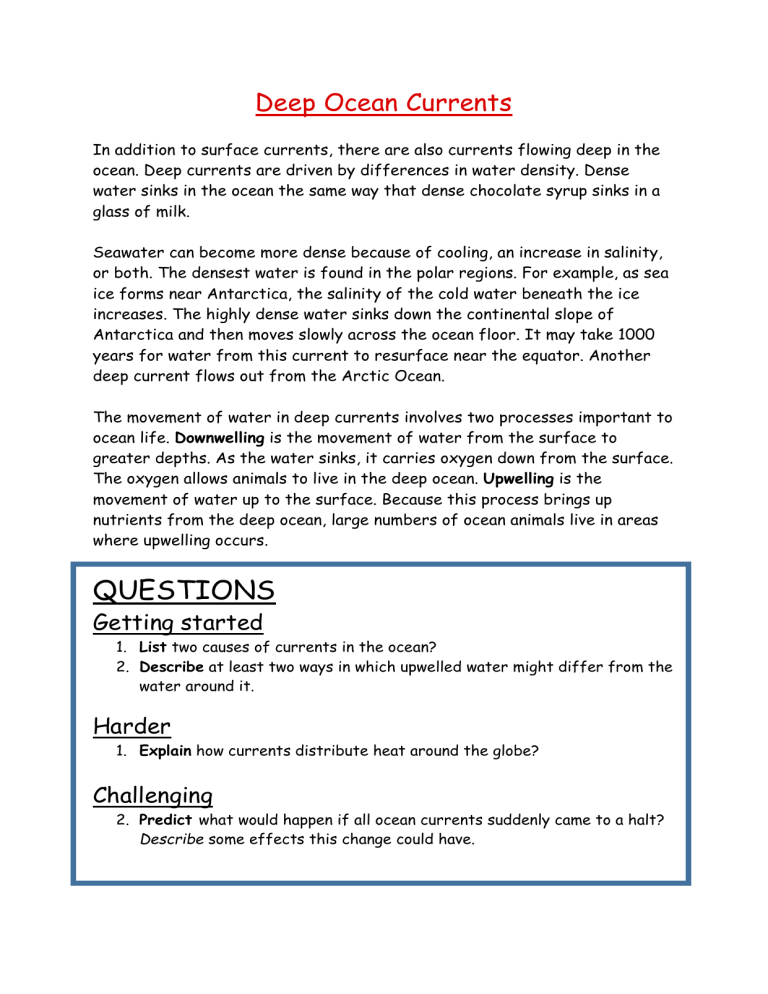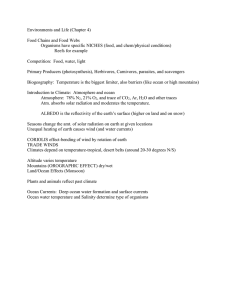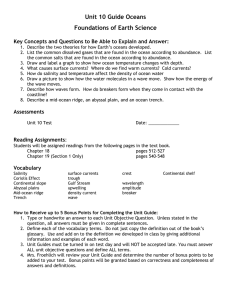
Deep Ocean Currents In addition to surface currents, there are also currents flowing deep in the ocean. Deep currents are driven by differences in water density. Dense water sinks in the ocean the same way that dense chocolate syrup sinks in a glass of milk. Seawater can become more dense because of cooling, an increase in salinity, or both. The densest water is found in the polar regions. For example, as sea ice forms near Antarctica, the salinity of the cold water beneath the ice increases. The highly dense water sinks down the continental slope of Antarctica and then moves slowly across the ocean floor. It may take 1000 years for water from this current to resurface near the equator. Another deep current flows out from the Arctic Ocean. The movement of water in deep currents involves two processes important to ocean life. Downwelling is the movement of water from the surface to greater depths. As the water sinks, it carries oxygen down from the surface. The oxygen allows animals to live in the deep ocean. Upwelling is the movement of water up to the surface. Because this process brings up nutrients from the deep ocean, large numbers of ocean animals live in areas where upwelling occurs. QUESTIONS Getting started 1. List two causes of currents in the ocean? 2. Describe at least two ways in which upwelled water might differ from the water around it. Harder 1. Explain how currents distribute heat around the globe? Challenging 2. Predict what would happen if all ocean currents suddenly came to a halt? Describe some effects this change could have. Deep Ocean Currents In addition to surface currents, there are also currents flowing deep in the ocean. Deep currents are driven by differences in water density. Dense water sinks in the ocean the same way that dense chocolate syrup sinks in a glass of milk. Seawater can become more dense because of cooling, an increase in salinity, or both. The densest water is found in the polar regions. For example, as sea ice forms near Antarctica, the salinity of the cold water beneath the ice increases. The highly dense water sinks down the continental slope of Antarctica and then moves slowly across the ocean floor. It may take 1000 years for water from this current to resurface near the equator. Another deep current flows out from the Arctic Ocean. The movement of water in deep currents involves two processes important to ocean life. Downwelling is the movement of water from the surface to greater depths. As the water sinks, it carries oxygen down from the surface. The oxygen allows animals to live in the deep ocean. Upwelling is the movement of water up to the surface. Because this process brings up nutrients from the deep ocean, large numbers of ocean animals live in areas where upwelling occurs. QUESTIONS Getting started 3. List two causes of currents in the ocean? 4. Describe at least two ways in which upwelled water might differ from the water around it. Harder 3. Explain how currents distribute heat around the globe? Challenging 4. Predict what would happen if all ocean currents suddenly came to a halt? Describe some effects this change could have.







